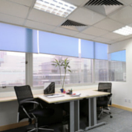Energise Staff With Clever Lighting
PallMallMany of us blame a drop in blood sugar for feeling tired in the
office mid- afternoon but have you considered it could be something
else completely? And that's poor lighting.
Just ask the Health and Safety Executive who list other symptoms
of poor lighting in the office as eye strain, migraine,
irritability and an inability to concentrate property. And it's not
just your employee who suffers either - unpleasant symptoms and
illness through poor lighting can lead to increased absenteeism and
a drop in productivity.
As an employer you actually have a duty under law to ensure you
are providing lighting which doesn't pose a health risk to any
employees. So how can you ensure that's the case?
How to set up 'healthy' office lighting
When it comes to lighting it's all about the 'layered look' ie
employing different types of lighting such as task, accent and
ambient. On their own each performs a particular function but they
orchestrate together beautifully.
* Task lighting - a desk lamp which allows the employee to read
print or a computer screen without suffering eye strain (clip-on
lamps will save desk space)
* Accent lighting - an overhead light aimed at illuminating the
whole room
* Ambient lighting - a downlighter turning a dull office corner
into a cosy meeting space away from the glare of computer
screens
* Natural light - put desks near to windows to benefit from this
energising source of natural light
Lighting tips
* A strip of LED lights behind a computer will ease the glare of
the screen
* LED bulbs are best, the light is more 'subtle' and they have
lower running costs. If you're stuck with fluorescent put a shield
or filter on it to reduce glare
It's important to get your office lighting right. After all, the
more soothing and comfortable the office environment is, the longer
your employees are going to want to stay there.
—
Pall Mall Estates have a wide range of low cost commercial properties across the UK.
Take a look at our available spaces here or get in touch with our experienced team here.







